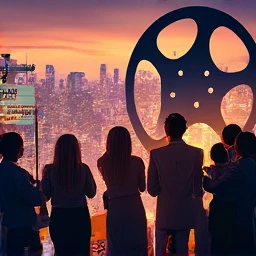The Evolution of Cinema: From Silent Films to Streaming Services
The world of cinema has undergone a remarkable transformation since its inception, evolving from the silent films of the early 20th century to the streaming giants that dominate today’s entertainment landscape. This evolution reflects not only technological advancements but also shifts in audience preferences and cultural narratives. Understanding this journey is crucial for anyone interested in the film industry, whether as a viewer, filmmaker, or scholar. In this article, we will explore the key milestones in cinema’s evolution, the impact of streaming services, and the future trends that will shape filmmaking in the next decade.
A Cinematic Journey: How Film Has Evolved Through the Ages
The history of cinema is marked by significant milestones that have shaped its development. From the early experiments with moving images by inventors like Thomas Edison and the Lumière brothers to the establishment of Hollywood as the epicenter of film production, each era has contributed to the rich tapestry of cinematic history. The silent film era, characterized by its reliance on visual storytelling and intertitles, laid the groundwork for narrative techniques that continue to influence filmmakers today.
As cinema transitioned into the sound era, known as the “talkies,” filmmakers began to explore new dimensions of storytelling. The introduction of synchronized sound not only enhanced the emotional impact of films but also expanded the possibilities for dialogue-driven narratives. This shift marked a turning point in the industry, leading to the Golden Age of Hollywood, where studios like MGM and Warner Bros. produced iconic films that defined the genre and established the star system.
In recent decades, the rise of independent filmmaking has diversified the cinematic landscape. With the advent of digital technology, filmmakers gained access to affordable production tools, enabling them to tell unique stories that challenge mainstream narratives. This democratization of filmmaking has led to a global exchange of ideas, with non-Western cinema gaining recognition and influence in the international market.
The Shift to Digital: The Emergence of Streaming Services
The digital revolution has fundamentally altered how films are produced, distributed, and consumed. Streaming services like Netflix, Amazon Prime, and Hulu have transformed audience viewing habits, shifting the focus from traditional theaters to home viewing. This change has been accelerated by the rise of binge-watching culture, where viewers consume entire seasons of shows in one sitting, fundamentally altering the pacing and structure of storytelling.
Traditional cinemas face numerous challenges in this new landscape, including declining box office revenues and the need to adapt to changing audience preferences. Many theaters have responded by enhancing the viewing experience with luxury seating, gourmet concessions, and immersive technologies like IMAX and 4D screenings. However, the competition from streaming platforms remains fierce, as they offer convenience and a vast library of content at the click of a button.
For independent filmmakers, streaming services have created unprecedented opportunities. Platforms like Netflix and Amazon Prime have invested heavily in original content, providing funding and distribution avenues for indie films that might otherwise struggle to find an audience. Successful examples include films like “The Irishman” and “Marriage Story,” which gained critical acclaim and visibility through these platforms.
Future Trends in Filmmaking: What to Expect in the Next Decade
As we look to the future, several trends are poised to shape the filmmaking landscape. Technological innovations such as virtual reality (VR) and augmented reality (AR) are set to revolutionize storytelling, offering immersive experiences that engage audiences in new ways. Filmmakers are already experimenting with these technologies, creating interactive narratives that allow viewers to influence the story’s direction.
Moreover, the rise of artificial intelligence (AI) in scriptwriting and production processes is expected to streamline filmmaking and enhance creativity. AI tools can analyze audience preferences and trends, helping filmmakers tailor their projects to meet viewer expectations. This data-driven approach could lead to more successful films and a deeper understanding of audience engagement.
Culturally, the push for representation and diversity in film is gaining momentum. Filmmakers are increasingly prioritizing inclusive storytelling that reflects a broader range of voices and experiences. This shift not only enriches the cinematic landscape but also fosters a deeper connection with audiences who see themselves represented on screen.
Conclusion
The evolution of cinema from silent films to streaming services illustrates a dynamic interplay between technology, culture, and audience engagement. As we navigate this ever-changing landscape, it is essential for filmmakers and audiences alike to embrace the innovations and trends that will shape the future of storytelling. By understanding the past and anticipating future developments, we can appreciate the rich history of cinema while looking forward to the exciting possibilities that lie ahead.
We invite you to share your thoughts on the evolution of cinema and how you see the future of filmmaking unfolding. What trends do you find most exciting? Join the conversation in the comments below!
